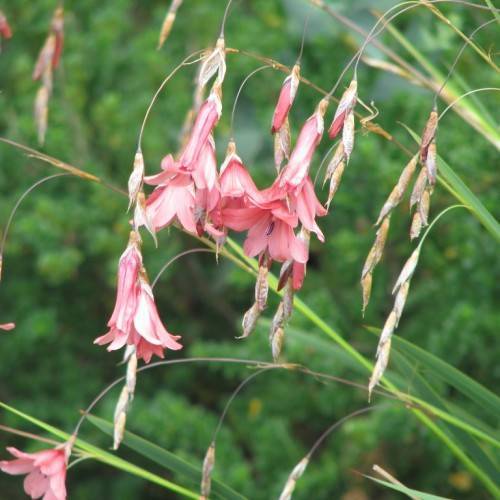
Angel’s fishing rod
Dierama igneum
Cycle:
Perennial
Watering:
Average
Hardiness Zone:
7 - 10
Flowers:
Flowers
Sun:
full sun,part sun/part shade
Leaf:
Yes
Growth Rate:
High
Maintenance:
Low
Drought Tolerant:
Yes
Salt Tolerant:
Yes
watering
Angel's Fishing Rod (Dierama igneum) requires watering about once a week in hot seasons, and about once every 2 weeks in the cooler months. The soil should be kept barely moist, and allowed to dry out somewhat between watering. This plant species should not be kept soaking wet. To avoid overwatering, wait until the top few inches of soil are almost dry before watering again. It is important not to allow the bulbs to dry out, as this can cause the plant to die.
sunlight
Angel's fishing rod, or Dierama igneum, is a perennial flowering species that thrives in full sun. It grows best when exposed to at least 6 to 8 hours of direct sunlight each day, although it can tolerate some partial shade. The plants prefer a warm climate and full sun, which will bring out their best color and flowering. For optimal success, plant Angel's fishing rod in an area that receives full sun in the morning and some shade in the afternoon.
pruning
Angel’s fishing rod should be pruned after it finishes flowering and no later than mid-summer. The pruning should be light, focusing on any dead, damaged or crossing branches. You should also thin out any overly congested parts of the shrub. You can also shorten any long branches to give the bush a more balanced form. Remove no more than 1-third of the stems at a time, since cutting back too much can damage or kill the plant.
